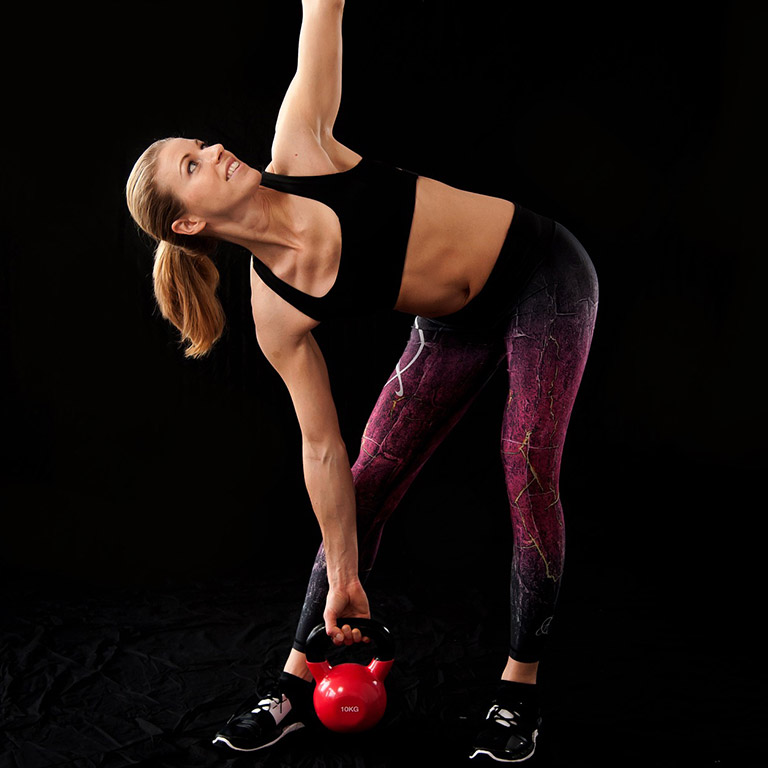As a Personal Trainer, one of the first questions I ask a new client is: “What is your goal?”. The answer to this is rather consistent across the board. Usually the answer focuses on losing fat, gaining muscle, toning up, or something of that nature. Although it’s great to always have a goal, unrealistic goals can create problems and leave you feeling unfulfilled. The reason for this is 3-fold. These goals focus on what you see in the mirror, the goal itself is a moving target and it usually is not a reflection of your body and instead a desire to look like someone else.
When you look in the mirror what do you see? I hope for everyone that you have the confidence to see the beautiful, unique, strong individual you are. However, most of the population will first see a flaw. We are so hard on ourselves that when we look at the body we are blessed with, instead of approaching it with gratitude, we critique it. This works on a very deep level for some people and there is no easy solution. So instead, I suggest you try and shift your focus from the vanity of your reflection and instead focus on how you feel. Let the progression of your fitness journey be measured on how you’re feeling instead of how you look. What’s your recovery like? Has your blood pressure or cholesterol changed? Are you sleeping better? Are you less bloated? Do you have more energy? Has your mood improved? All of these metrics are a reflection of a stronger path you are traveling down instead of the reflection in the mirror. If you focus on how you feel, instead of how you look, you’ll eventually love both.
Let’s now imagine that you’ve been heading through your fitness journey for a little while and you’re approaching one of the measurable goals that you initially set. Do you take the time to celebrate in your success? This doesn’t mean that the number on the scale drops so you reward yourself with a cheeseburger. This is all too common and is very self-sabotaging. Instead of just the scale, let’s focus on one of the metrics we mentioned above. If your goal was centered around a metric such as blood pressure, heart rate or measurements and one morning you’ve hit the goal that you’ve set for yourself, what is your response? There are three consistent categories here: you can self-sabotage all the hard work that you’ve put in, you can ignore the original goal and immediately set a new one, or you can allow yourself to truly be proud of what you accomplished. Now, the first two in no way acknowledge all the hard work that you have endured. Starting a fitness journey and achieving any goal you’ve set for yourself is hard. Please hear that. It is hard. This is why you need to stop, take the time and be proud of yourself. Do not keep your success a secret because you deserve to be celebrated. I promise if you share your great news there are so many people around you that will want to celebrate you and your success. We have a whole community just waiting to praise you for all of your hard work. So, shout it out to the world and be proud!
With all this talk about goals, I’m going to now ask you a challenging question. Where did your goal stem from? I want you to truly ask yourself, if where this goal originated from is a healthy and productive space. A non-healthy goal is when you inspire to look like someone else. I know I’m stating the obvious here, but I will shout it until I’m blue in the face; everyone is created differently! There may be one female who is 5’2” with 15% body fat who weighs 115lbs and another 5’2’ female with 10% body fat who weighs 115lbs. Believe it or not, their training and caloric intake can be exactly the same, and this can still be the case solely due to genetic makeup. So if you think about the goal you have in mind and it centers around someone other than yourself in this current moment, please check yourself and allow yourself to honor your specific body and its genetic makeup with it’s own specific goals. When I was younger, I dreamed of looking like Arnold Schwarzenegger or Ronnie Colman. You may chuckle at that now, but to an aspiring weight lifter, this was the goal. The issue that I did not consider was not only the genetic makeup specific to those men, but also what may be happening behind the scenes. When we compare ourselves to “fitness” celebrities there are plenty of enhancements and alterations that are skewing the image of what we are comparing ourselves to. Therefore, not only are these people the elite to begin with, they are usually further altered with synthetic enhancements and/or photoshopped. I’m not accusing Arnold or Ronnie of this as in my mind they are still worthy of all my admiration. I’m simply pointing out that if you shape your fitness goal by comparing yourself to someone else, you are chasing the impossible. Focus on you and you will succeed.
With all this talk on how to structure your goals, I hope they are now centered around metrics. I hope it focuses on how you feel rather than how you look. Most importantly, I hope the reason for this fitness journey is to honor your health and your unique body as opposed to an attempt to look like anyone else. There is only one you and you are important. I can help you through this journey, so you can achieve your goals and ultimately live your version of a Strong Life.


